Many divers, while planning their dream trip abroad, prioritize diving seasons. For those unfamiliar with the Maldives, “What is the best diving season?” is a common question. After all, nobody wants to spend their hard-earned money and time diving in bad conditions or, worse, being unable to dive at all. This guide will explore the Maldivian weather and how it affects diving.
The Maldives: No Single Diving Season, Just Seasonal Spectacles
The truth is, there is no single “off-season” for diving in the Maldives. Apart from a few occasional rough weather days (typically around May/June and October/November), diving is possible year-round. However, what you encounter underwater – visibility, currents, and marine life – varies throughout the year.
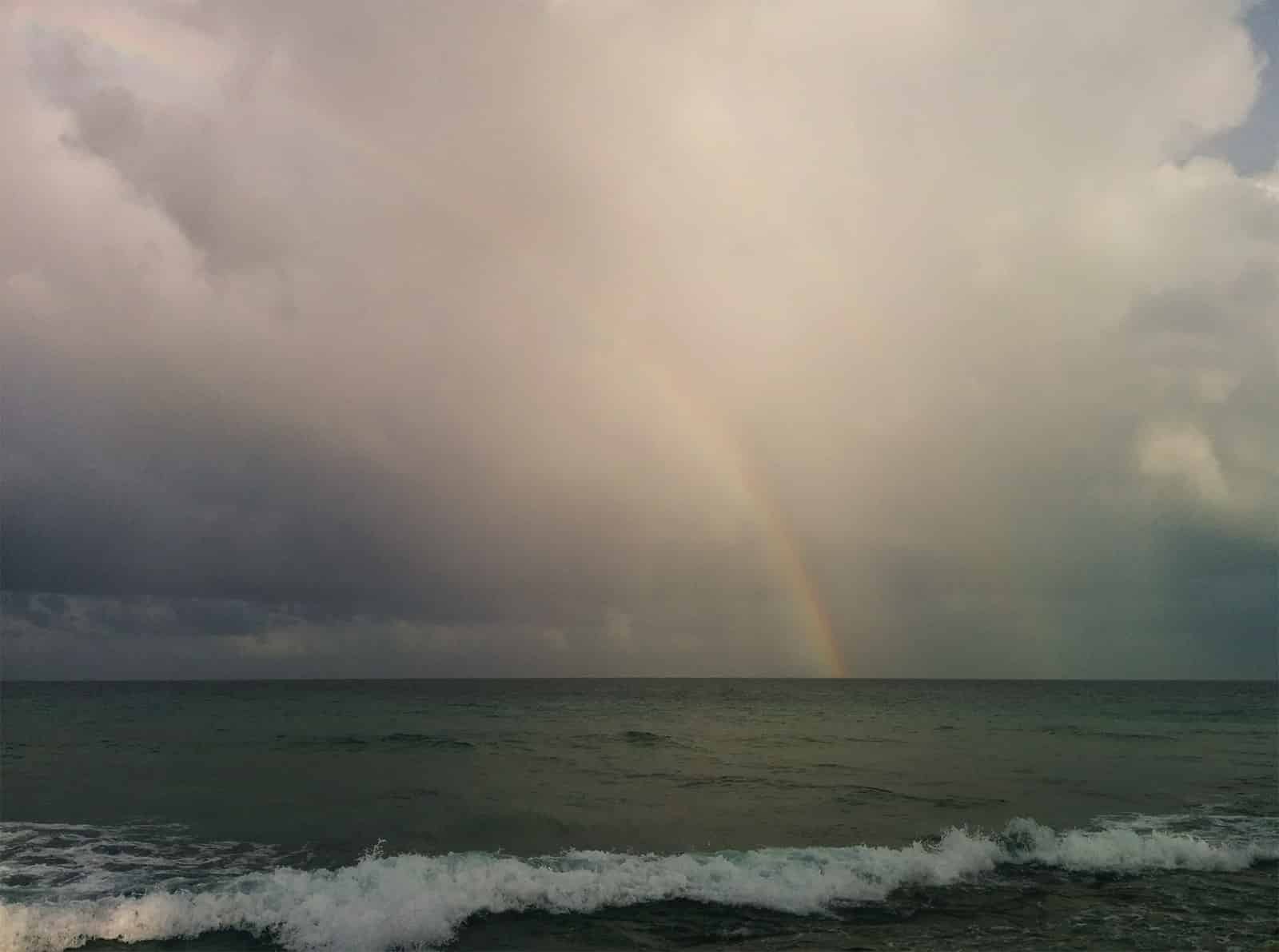
Rainbow peaking out between some clouds, after some rain.
The Monsoons: Nature’s Guiding Force
The Maldives experiences two monsoons, referred to locally as “moosun,” which translates to “weather.” The Northeast Monsoon (December to March) is called Iruvai Moosun, and the Southwest Monsoon (May to November) is called Hulhangu Moosun. Each monsoon brings periods of variable weather. Traditionally, Maldivians observed 14-day weather patterns called Nakaiy, each with distinct characteristics, including different sea conditions and rainfall. December and April mark the monsoon transition periods, with more variable weather.
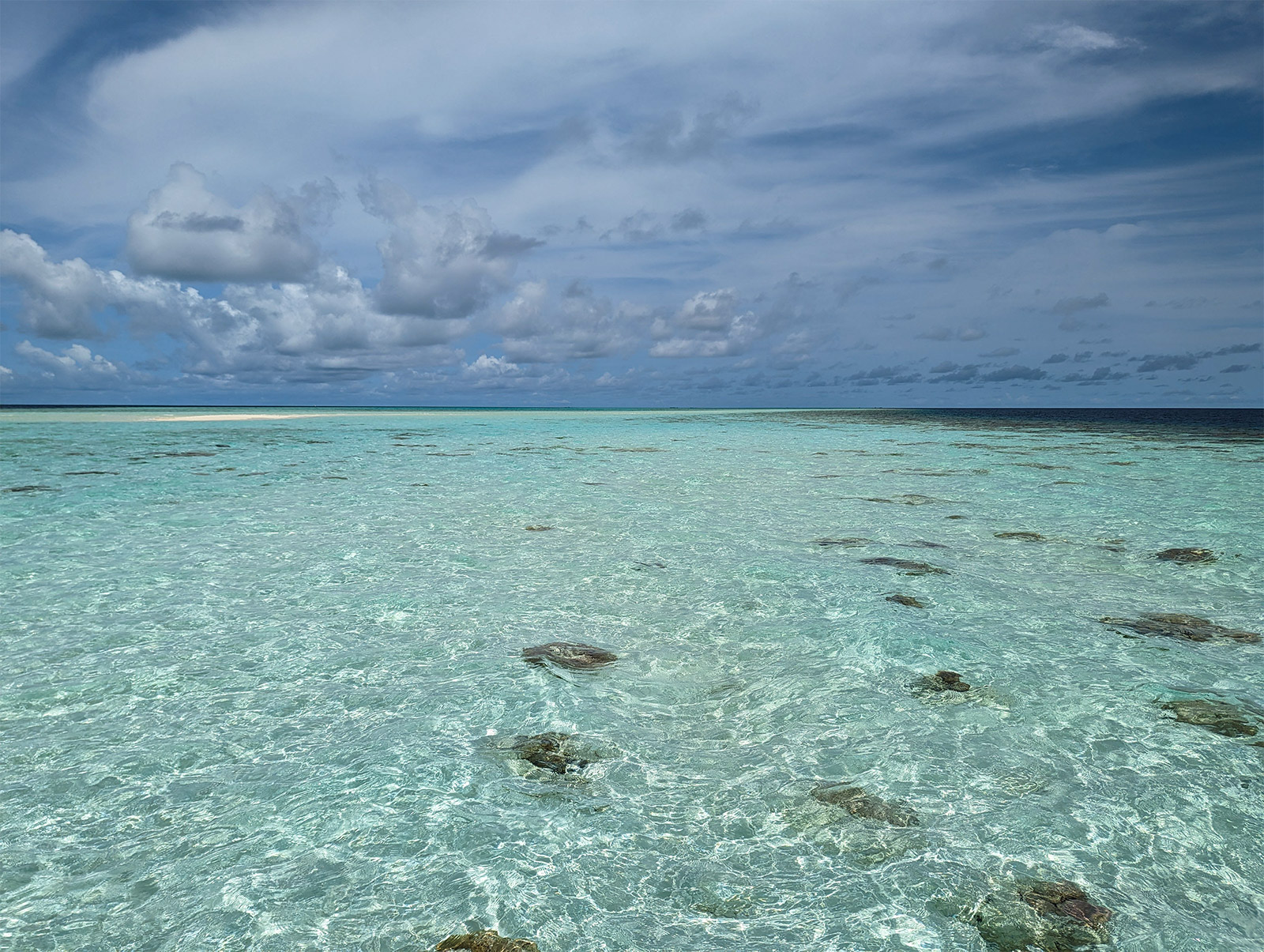
A day in August, during the South West monsoon, which is often referred to as the “rainy” or “off” season.
Rain and Storms: A Balanced Perspective
The Northeast Monsoon is often called the “dry” monsoon, and the Southwest Monsoon is the “wet” monsoon. However, this is not entirely accurate. Both monsoons can experience rain. The average temperature ranges from a comfortable 25°C to 32°C. The Maldives Meteorological Service reports that the Maldives receive the most rain from May to July in the North (Hanimaadhoo) and May and October to November in the central and Southern Maldives (Malé area and Gan). Even if you encounter rain, it typically clears up within days. As an equatorial nation, the Maldives rarely experience severe storms, and bad weather does not last long.
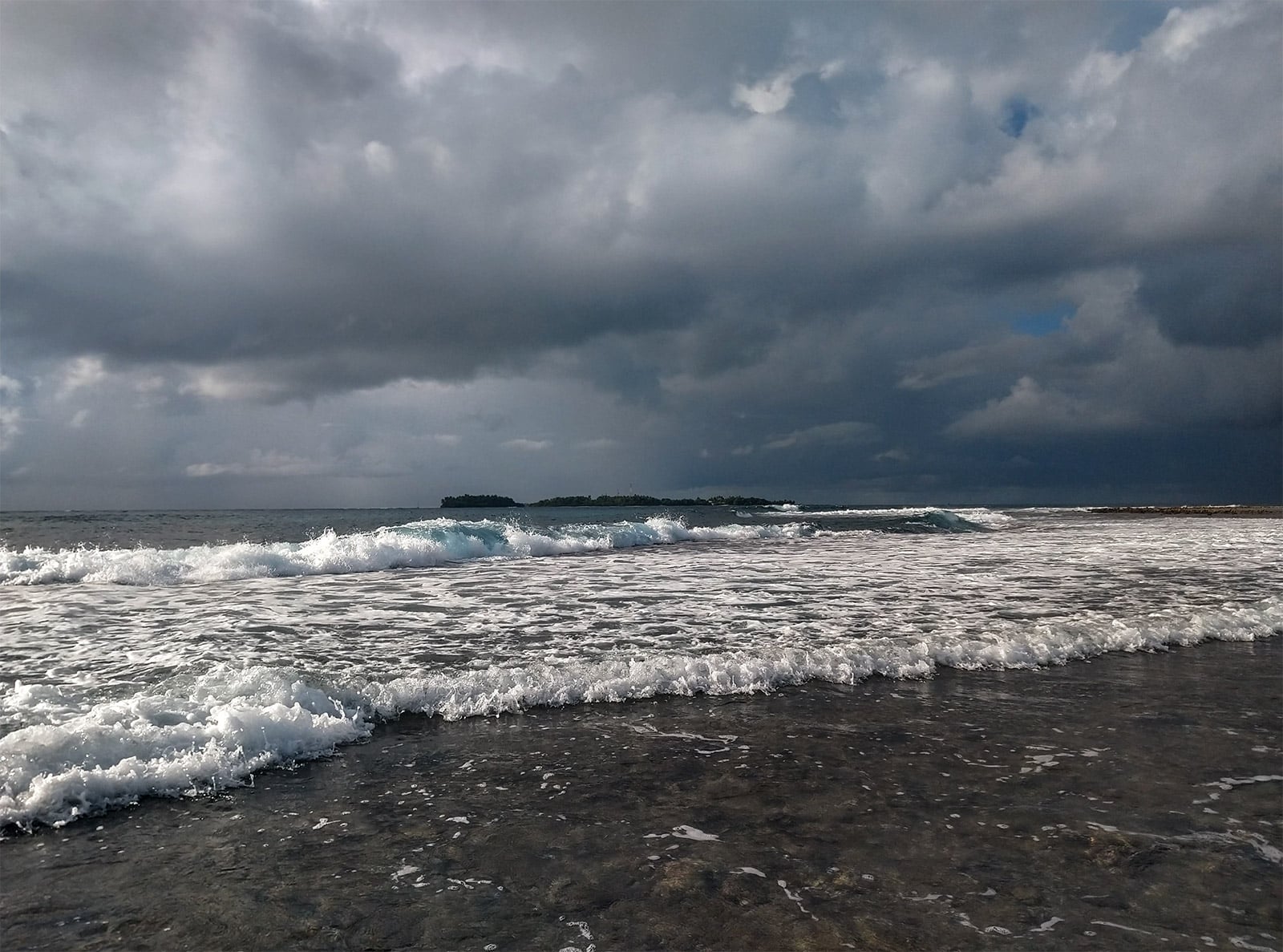
A storm brewing over the horizon.
Tides and Currents: Understanding the Flow
Maldivian tides are predictable, making it easy to anticipate currents while diving. The Northeast Monsoon often brings stronger spring currents flowing into the atolls along eastern channels and out via western channels. These currents can be exhilarating for experienced divers with proper drift diving training. Visibility during this period is often exceptional, allowing divers to witness the wonders of marine life as they drift along with the current. Imagine gliding effortlessly past vibrant coral reefs teeming with colourful fish, dolphins, and even majestic sharks.
The Southwest Monsoon brings a shift in current direction with the tides. Currents peak during mid-tide, with slack tides experiencing little to no current. Full and new moon periods (spring tides) see the strongest currents, while currents are weaker during neap tides. This allows divers of all experience levels to explore the underwater world at their own pace.
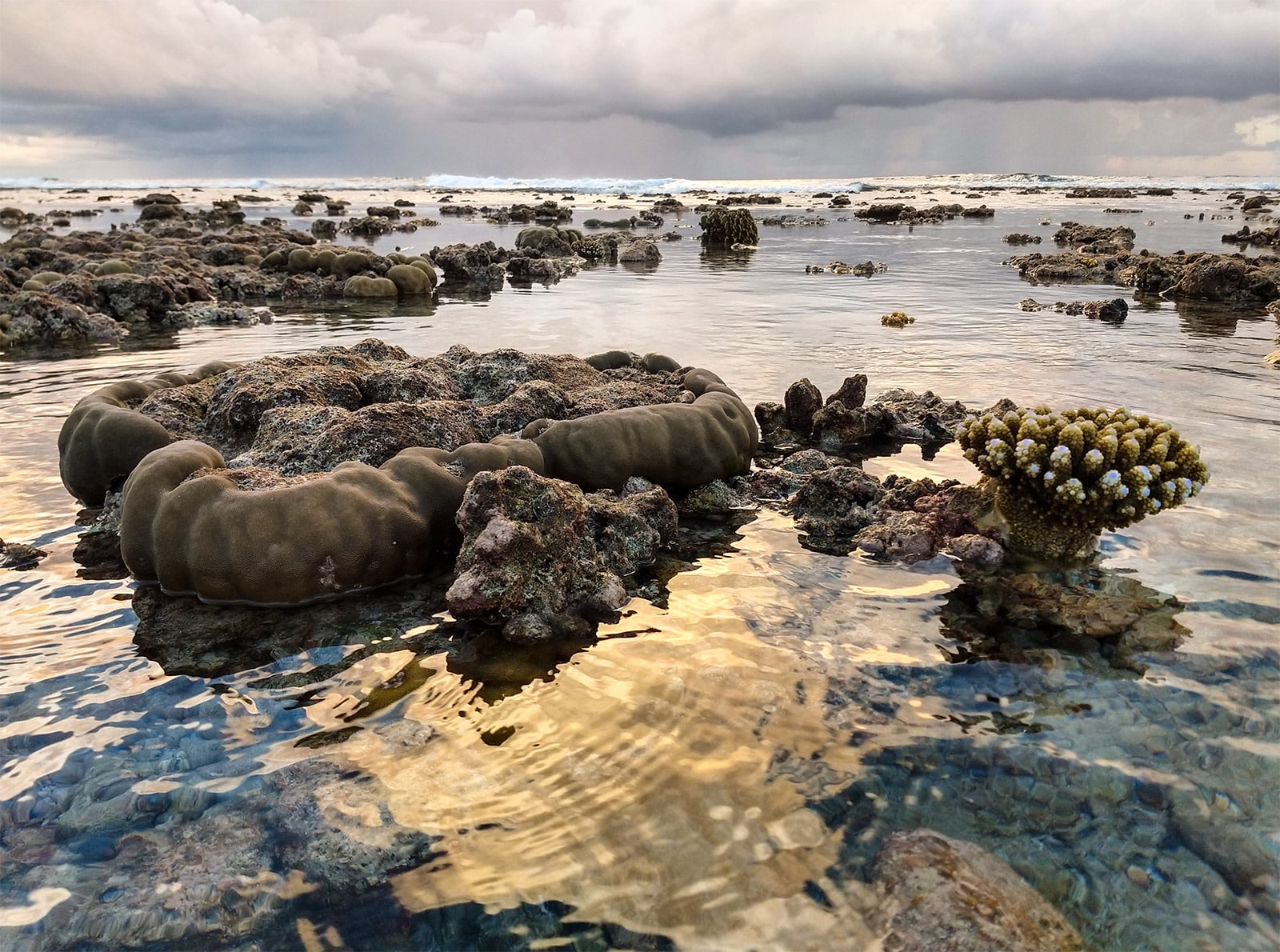
A low tide temporarily exposing live coral on the reef top.
Marine Life and Underwater Visibility: A Diver’s Delight
Visibility is a crucial factor for divers. The best visibility in the Maldives occurs from January to April, with peak clarity around March. During this time, sunlight penetrates deep into the crystal-clear waters, illuminating the vibrant colours of the coral reefs and the diverse marine life. Imagine spotting a shy nudibranch nestled amongst the coral or a mesmerizing school of fish swirling in a mesmerizing ballet.
Marine life movement is also seasonal. Manta Rays, the graceful giants of the sea, migrate from the western to the eastern sides of the atolls during the Southwest Monsoon (April to November). Divers can witness these magnificent creatures gracefully gliding through the water. Marine life moves around depending on the season, and key life cycle stages like mating are tied to the seasons.
The Southwest Monsoon brings slightly lower visibility compared to the Northeast Monsoon. However, this is due to an abundance of plankton – a food source that attracts a wider variety of marine life! While visibility might be reported as “lower” during this period, it is still excellent compared to most dive sites globally. Think abundant schools of colourful fish, reef sharks cruising by, and even majestic whale sharks feeding on the plankton bounty.

Manta Rays arriving to the Eastern side of the Atoll.
Diving Safety: A Top Priority
Regardless of the season, safety is paramount. Always pay close attention to your dive guide’s briefing. They are experts on the local dive sites and conditions, ensuring your safety and maximizing your enjoyment. Each diver (not just the buddy team) should carry a long SMB (Surface Marker Buoy), whistle, and torch. These crucial pieces of equipment can ensure a safe and smooth dive experience. Always dive within your limitations. If you feel uncomfortable with a particular dive, do not hesitate to skip it – your comfort and safety are the top priorities.
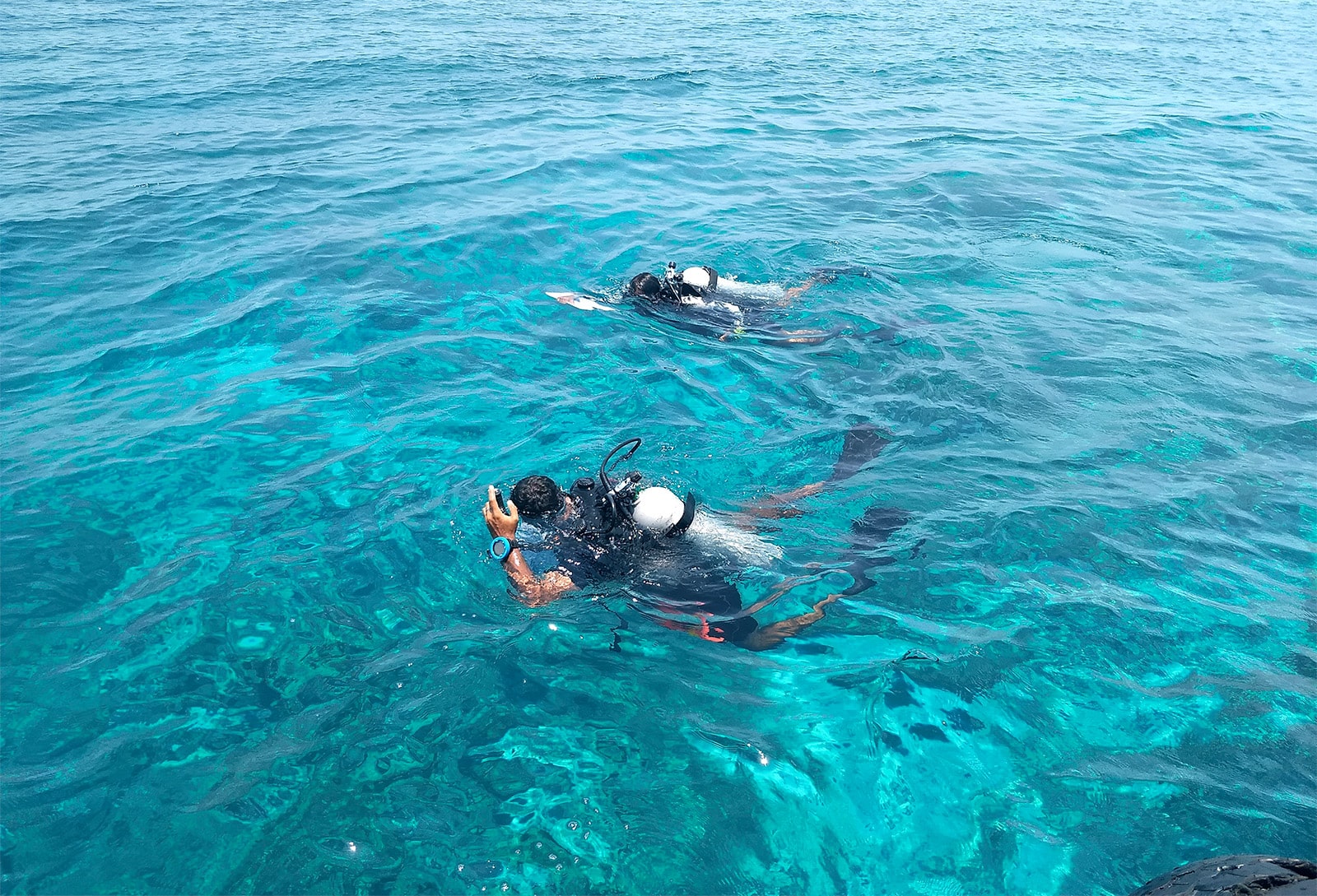
Dive when you are comfortable with the conditions.
In Conclusion: Unveiling the Maldives, Year-Round
Planning a trip from afar can make gauging the weather a challenge. Contact the dive centre on your chosen island for the most up-to-date information. No matter the season you choose, the Maldives promises an unforgettable dive experience. Reach out to us if you want to learn more about the unique characteristics of each season and discover the perfect time to visit the Maldives.
We look forward to welcoming you to our underwater paradise!
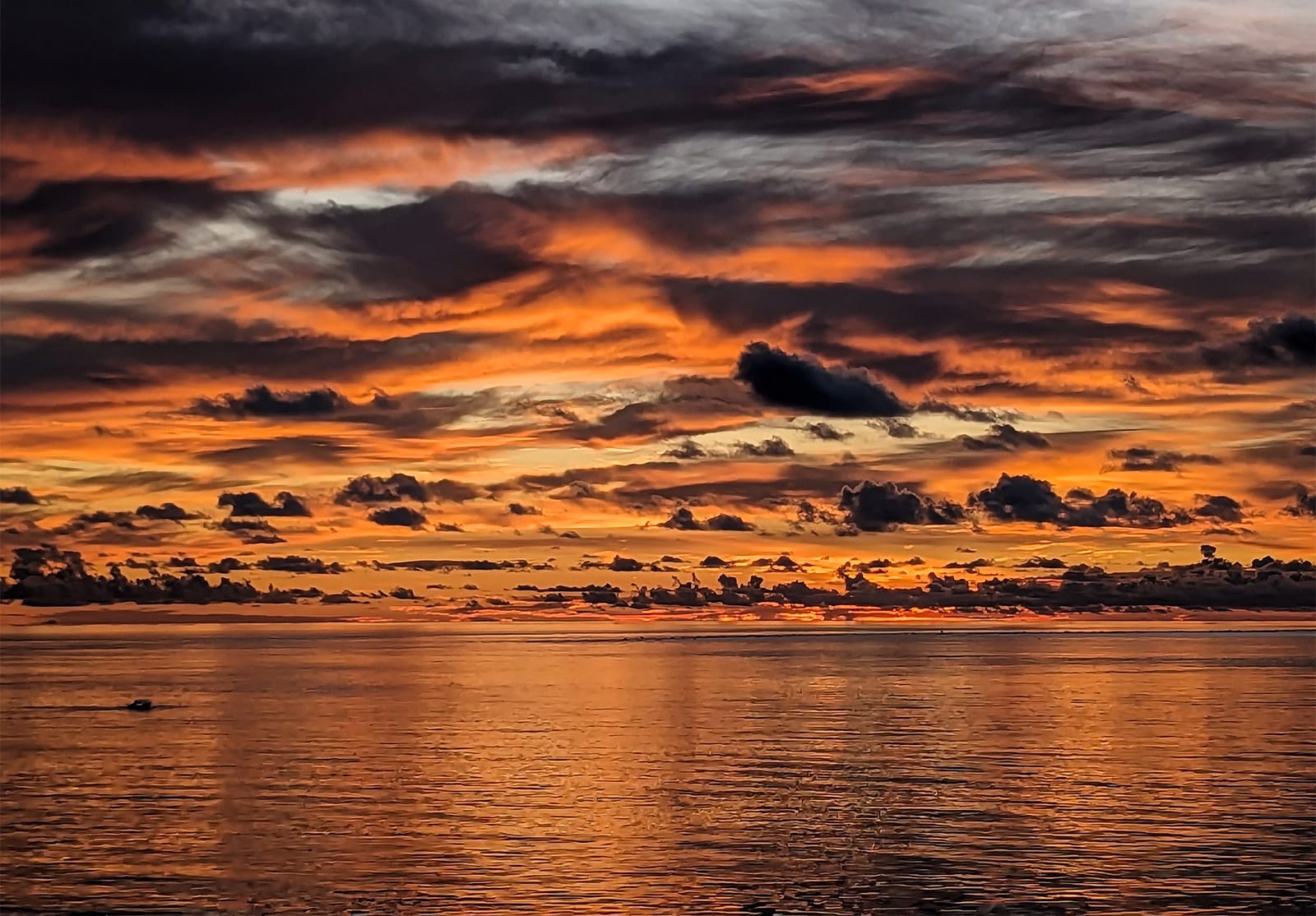
Sunset experienced out in the islands.


Recent Comments